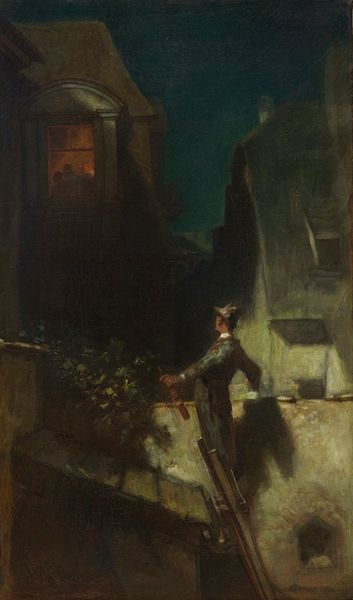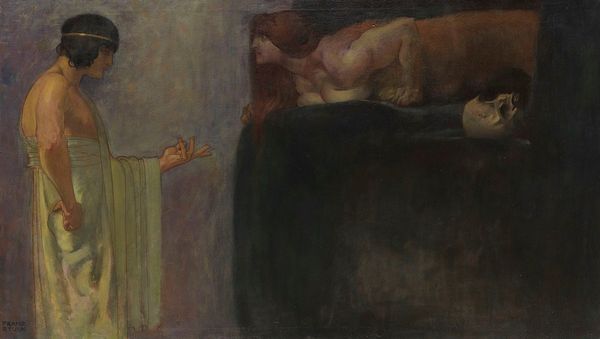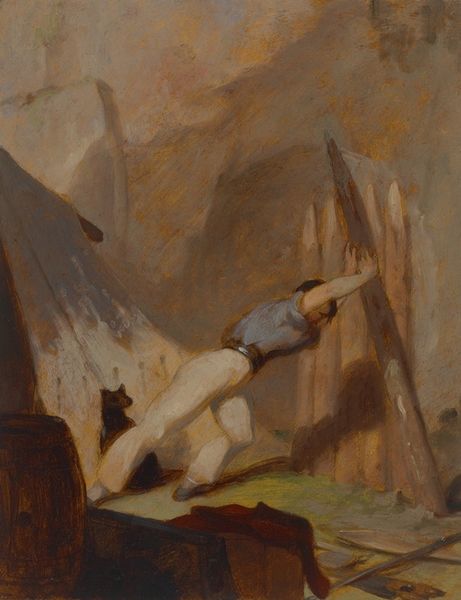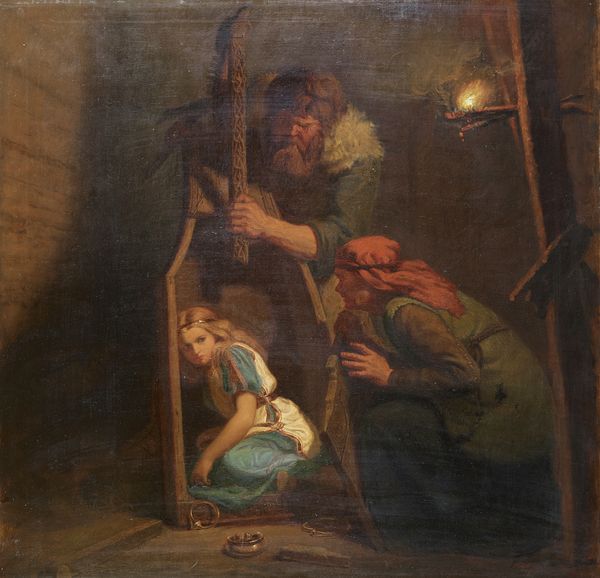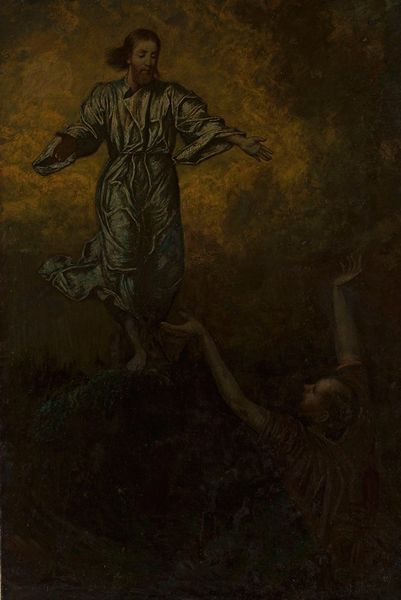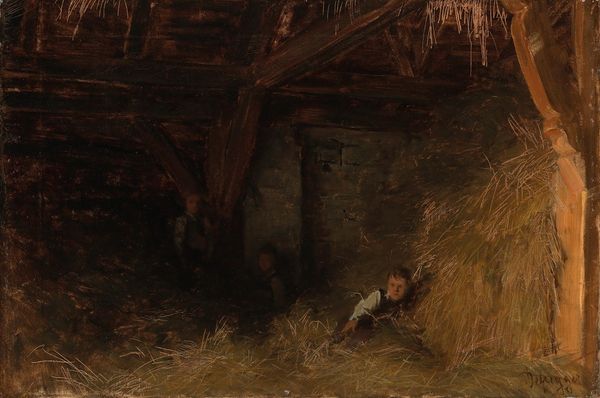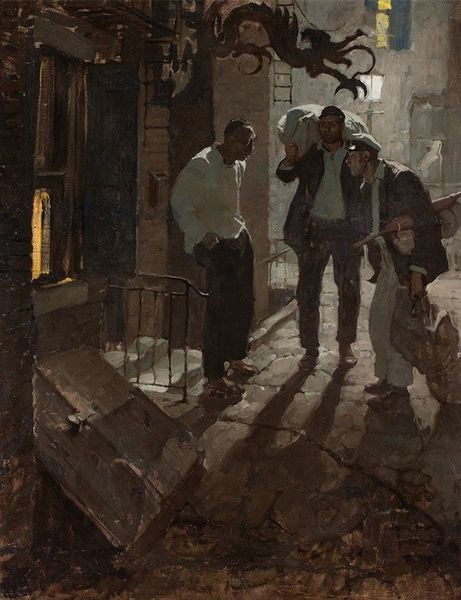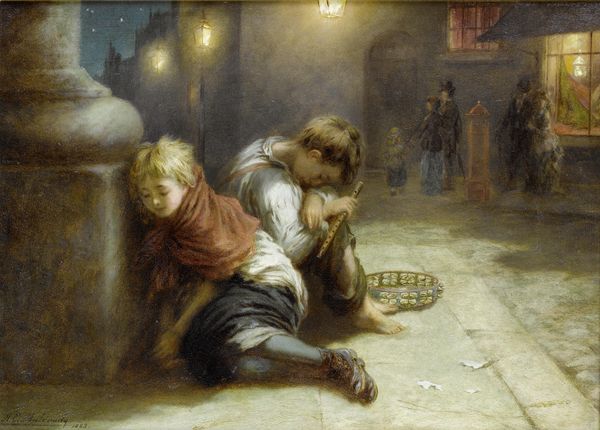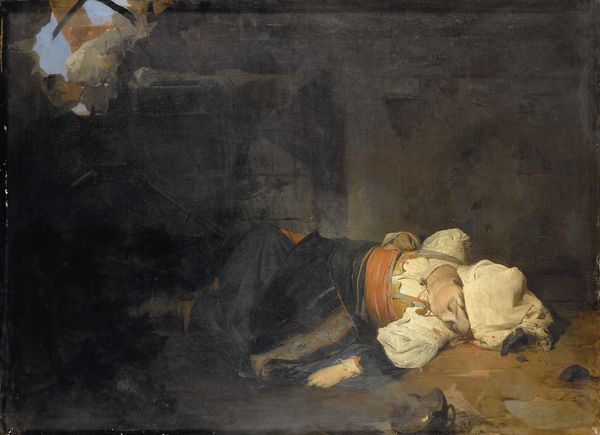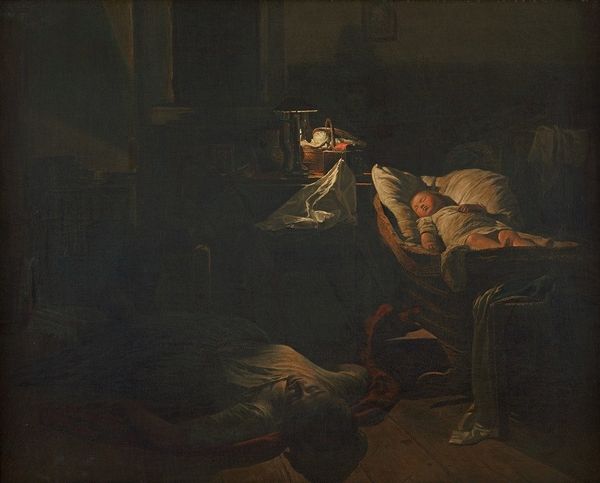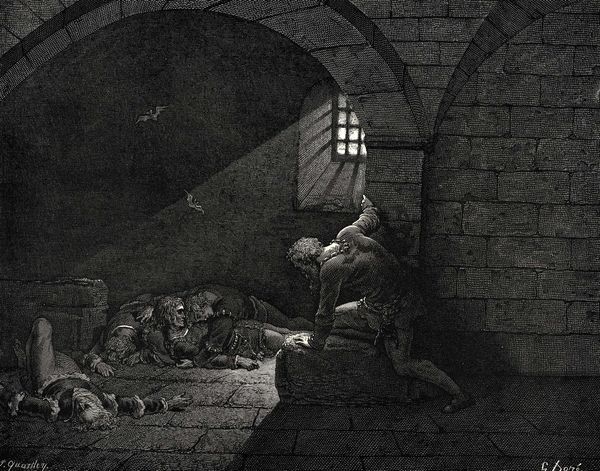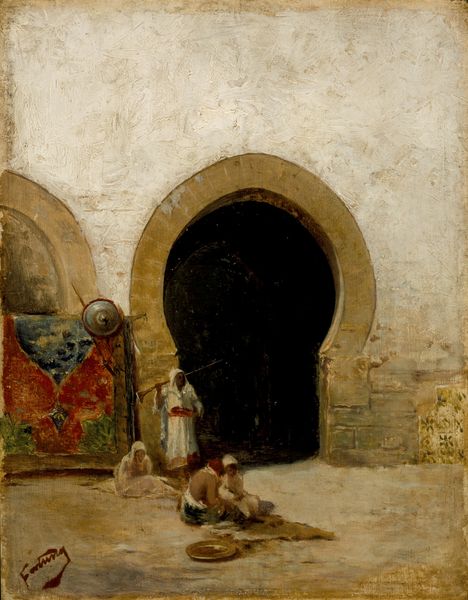
painting, oil-paint
#
allegory
#
painting
#
oil-paint
#
figuration
#
romanticism
#
mythology
#
genre-painting
#
history-painting
#
academic-art
Copyright: Public Domain: Artvee
Jean-Léon Gérôme painted Cupid at the Door in a Rainstorm using oil paints to capture a scene imbued with classical and romantic themes. Oil paint, ground pigment suspended in drying oil, usually linseed, allowed Gérôme to build up layers of translucent color, creating luminosity and depth. The smooth, almost photographic realism he achieved was highly prized in academic painting of the 19th century. But what about the labor implicit in creating such a seemingly effortless illusion? Consider the work of the colormakers, canvas preparers, and studio assistants who supported artists like Gérôme. They were essential to the production of these paintings, yet their contributions are rarely acknowledged. Gérôme's meticulous brushwork and attention to detail reflect a culture that valued technical skill above all else. Yet, this emphasis on polish often obscured the social and economic conditions that made such art possible. By recognizing the role of materials, processes, and social context, we can move beyond conventional art history and appreciate the full complexity of works like this one.
Comments
No comments
Be the first to comment and join the conversation on the ultimate creative platform.
